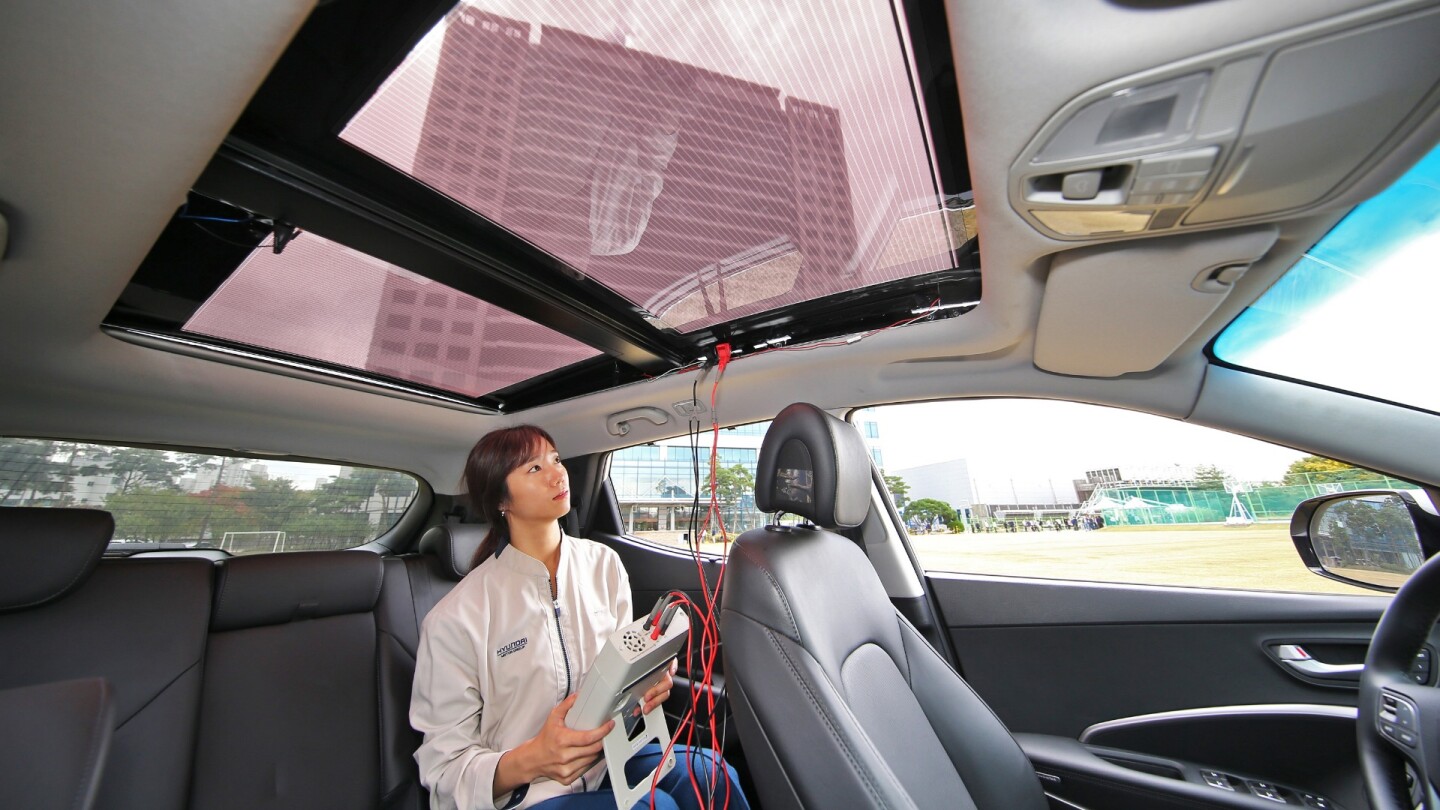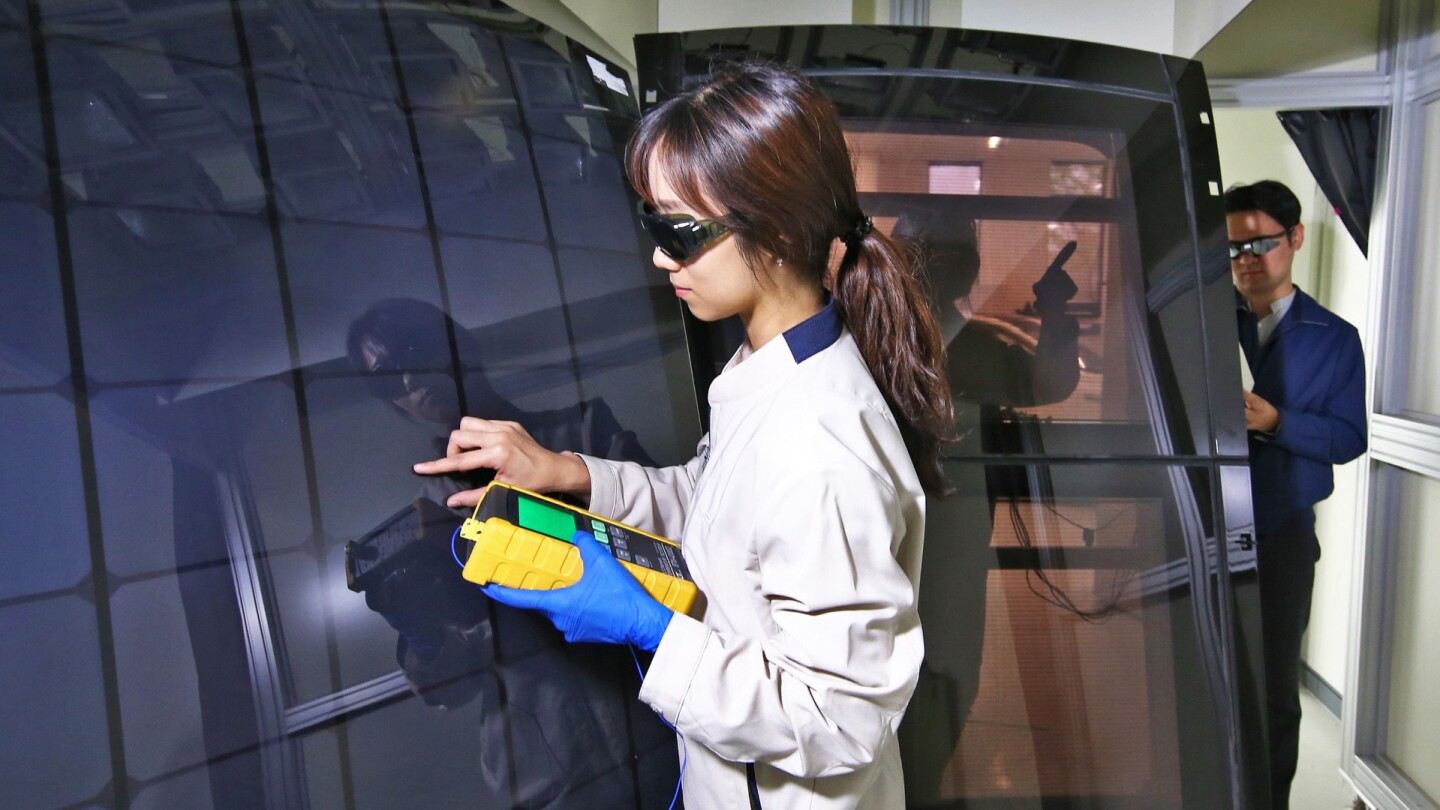The automotive world's attention may be focused on the high-performance parts of the 2018 SEMA Show, but Hyundai is providing some details on a very different style of performance-enhancing component. Beginning around 2020, it will add solar roof panels to both electrified vehicles and gas models as a way of boosting efficiency. Its solar integration will evolve over time to include a semi-transparent, solar-harvesting sunroof and a solar roof and hood combo.
Hyundai Motor Group is participating in SEMA with the usual small army of high-performance components and concept cars, but it's also capitalizing on the timing to focus on a more serious breed of component not on show in Vegas. Its soon-to-launch solar roofs will help improve efficiency and cut emissions on a select range of Hyundai and Kia vehicles. They will feature not only in the growing electric and hybrid lineup, but also in purely gas vehicles, directly charging batteries and cutting the workload on the internal combustion engine (ICE).
Hyundai has announced a three-stage deployment, the first stage of which will see mass-produced silicon solar panels mounted onto the standard roofs of hybrid vehicles. Hyundai estimates that these panels will be capable of charging the battery between 30 to 60 percent per day, depending upon weather conditions.
The second stage will represent a more dramatic step forward: applying a semi-transparent solar roof system to ICE-powered vehicles in what Hyundai calls a world first. The panels will charge the main battery or an auxiliary battery included as part of the system while blending more naturally into the sunroof structure. Hyundai expects this strategy to help ICE vehicles meet global emissions regulations, thereby boosting export numbers.

The third stage, which is currently the subject of a pilot study, will see fuller integration of solar panels into the vehicle structure, on both the roof and hood. This broadened system will increase solar output across a range of eco-friendly vehicles.
"In the future, various types of electricity generating technologies, including the solar charging system, will be connected to vehicles," explains Jeong-Gil Park, executive VP of Hyundai Motor Group's engineering design division. "This will enable them to develop from a passive device that consumes energy to a solution that actively generates energy."

Hyundai hasn't laid out a full timeline for all three stages, but it does say that it intends to launch the first solar roof systems after 2019.
Source: Hyundai






